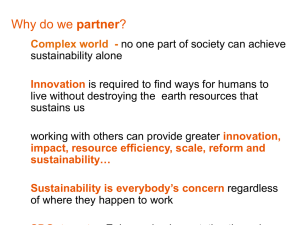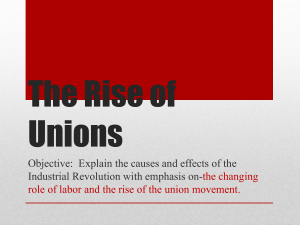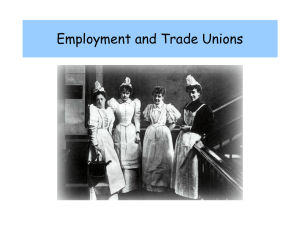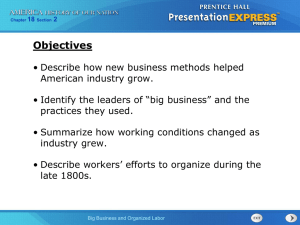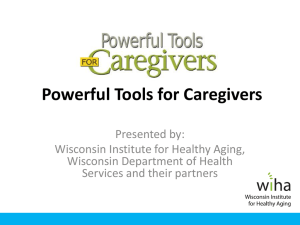Curriculum
advertisement
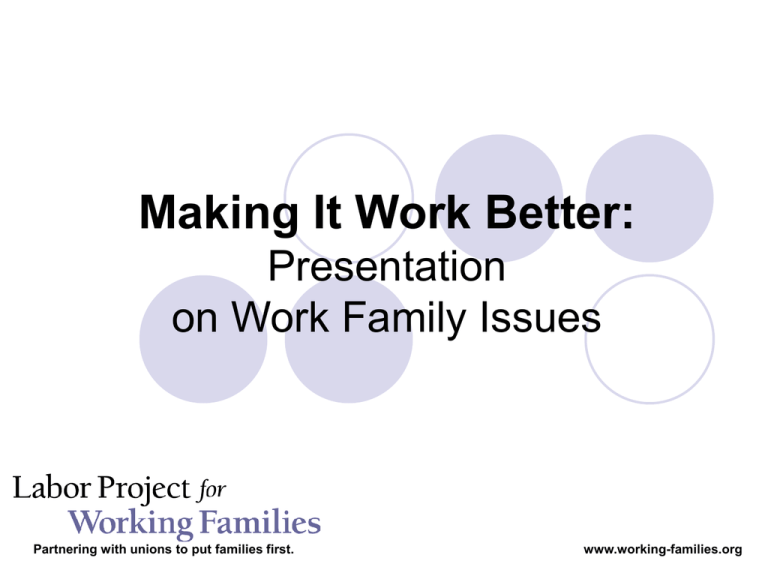
Making It Work Better: Presentation on Work Family Issues Partnering with unions to put families first. www.working-families.org CHILD CARE What’s happening in families today? Three-quarters of all children under age 5 who have working parents are in some type of child care. One in ten children aged 6-12 are alone or with a sibling under age 13 during the summer. Partnering with unions to put families first. www.working-families.org CHILD CARE & INCOME Low income families spend more. Chart 1: Child care Low income families spend 14% of their earnings on child care while higher income families spend 7%. income families High income families have greater access to quality or standard child care. Children from higher income families much more likely to be in center-based care, while children in lower income families are more likely to be cared for by a relative. costs for low 14% 86% Chart 2: Child care costs for high income families 7% 93% Partnering with unions to put families first. www.working-families.org ELDER CARE Did you know that 23 million Americans care for elderly relatives? Elder care costs families more than $659,000 over a lifetime in lost wages, social security and pension contributions. $567,000 in lost wages. $67,000 in retirement contributions. $25,000 in social security benefits. Source: MetLife “Juggling Act Study 1999” Partnering with unions to put families first. www.working-families.org WORK TIME 84% of all workers/caregivers make adjustments to their work schedules… Taking sick leave or vacation time Decreasing scheduled work hours Taking leaves of absence Switching from full time to part-time work Resigning or retiring. Source: MetLife “Juggling Act Study 1999.” Partnering with unions to put families first. www.working-families.org WORK TIME More than 1/3 of working women with partners or spouses work different shifts than their partner/spouse. 80% of men work more than 40 hours a week. Men and women who work overtime average an additional 6.63 hours a week. Partnering with unions to put families first. www.working-families.org FAMILY LEAVE 47% of workers in the US have no paid sick time. 86 million workers do not have paid sick time that they can use to care for a sick child. 34% of parents reported that caring for their sick child led to difficulties at work. 84% of workers say it is important to expand the Family and Medical Leave Act. Partnering with unions to put families first. www.working-families.org Why should work and family benefits be important to employers? High Turnover – people leave jobs because they are caregivers Higher Education & Training Costs – associated with high turnover Time Lost - to additional phone calls, partial absenteeism when employee deals with crisis (about 3 days per year) Caregivers average 6 days absence per year due to caregiving responsibilities Partnering with unions to put families first. www.working-families.org Supporting work and family initiatives brings positive return on investments for unions and employers. Any funds spent by the employer to help with caregiving have a payback to the employer of 2.5 to 5 times the cost. Source: Pfizer, 1997 Partnering with unions to put families first. www.working-families.org Who is going to take care of you? Baby Boomers 77 million Generation X 44 million Generation Y 60 million Partnering with unions to put families first. www.working-families.org CAREGIVERS PROFILE Typical caregiver is a married woman in her mid-40s who works full-time. Just over half of all caregivers are employed full-time. 12% are employed part-time, and 16% are retired The average caregiver provides 18 hours of care a week. Partnering with unions to put families first. www.working-families.org Almost one in five caregivers provide either “constant care” or at least 40 hours of care a week. Many caregivers will spend as many or more years caring for aging relatives as they spent caring for their own children. Partnering with unions to put families first. www.working-families.org More than half of employed caregivers have modified their work schedules or made other accommodations to their jobs in order to meet caregiving responsibilities. One-fifth of caregivers have quit their jobs permanently or temporarily. Partnering with unions to put families first. www.working-families.org Are you ready for caregiving? Can you make it work? Partnering with unions to put families first. www.working-families.org
